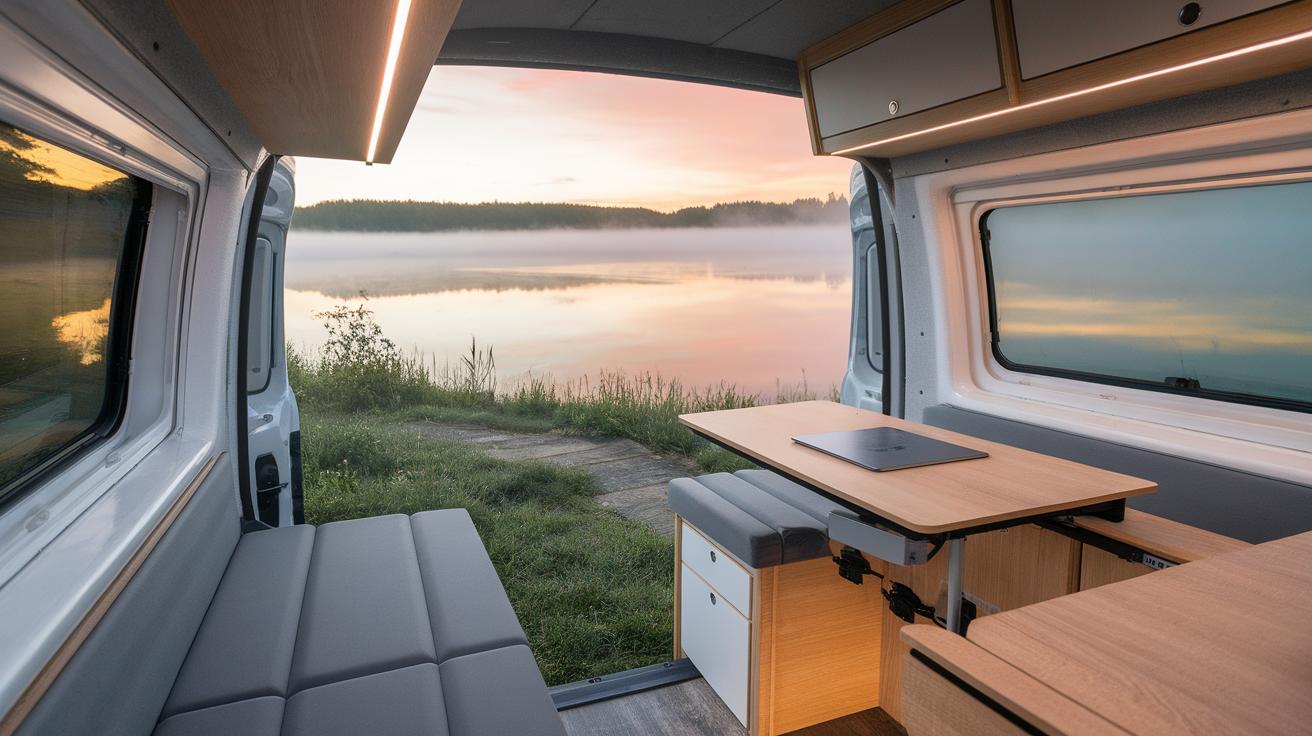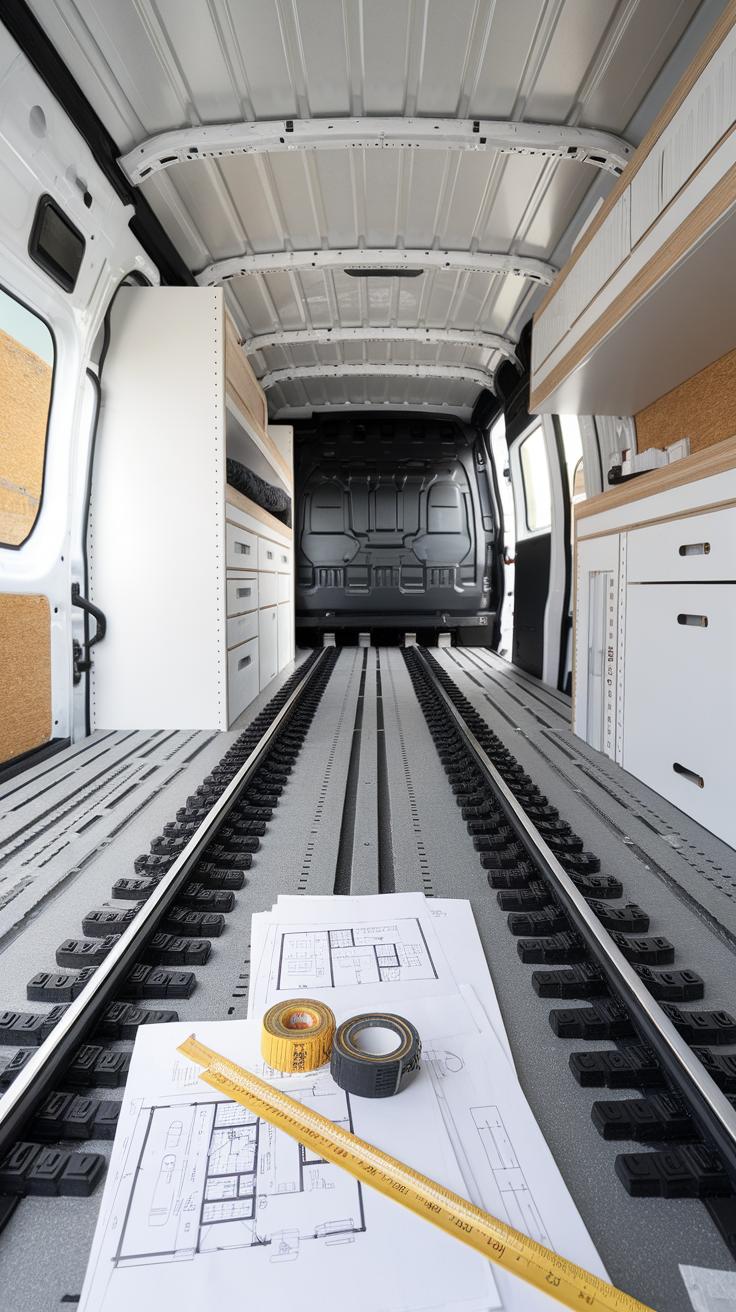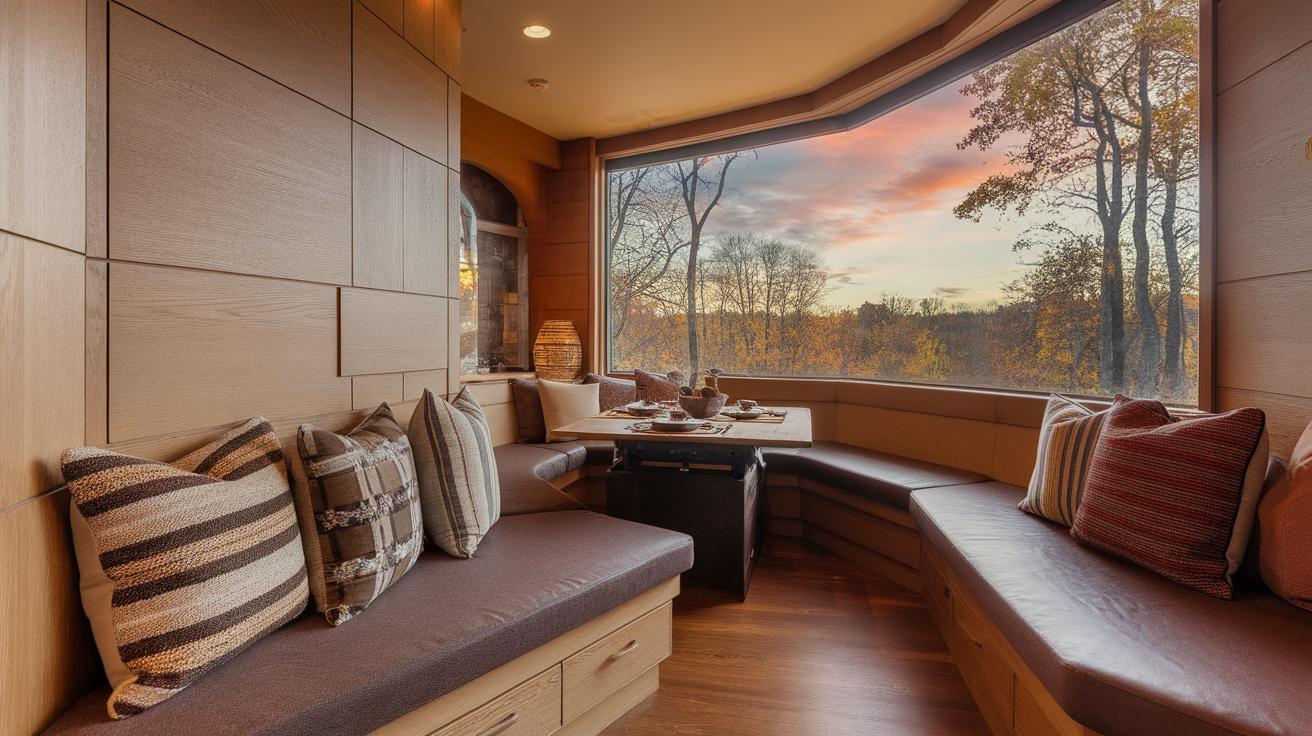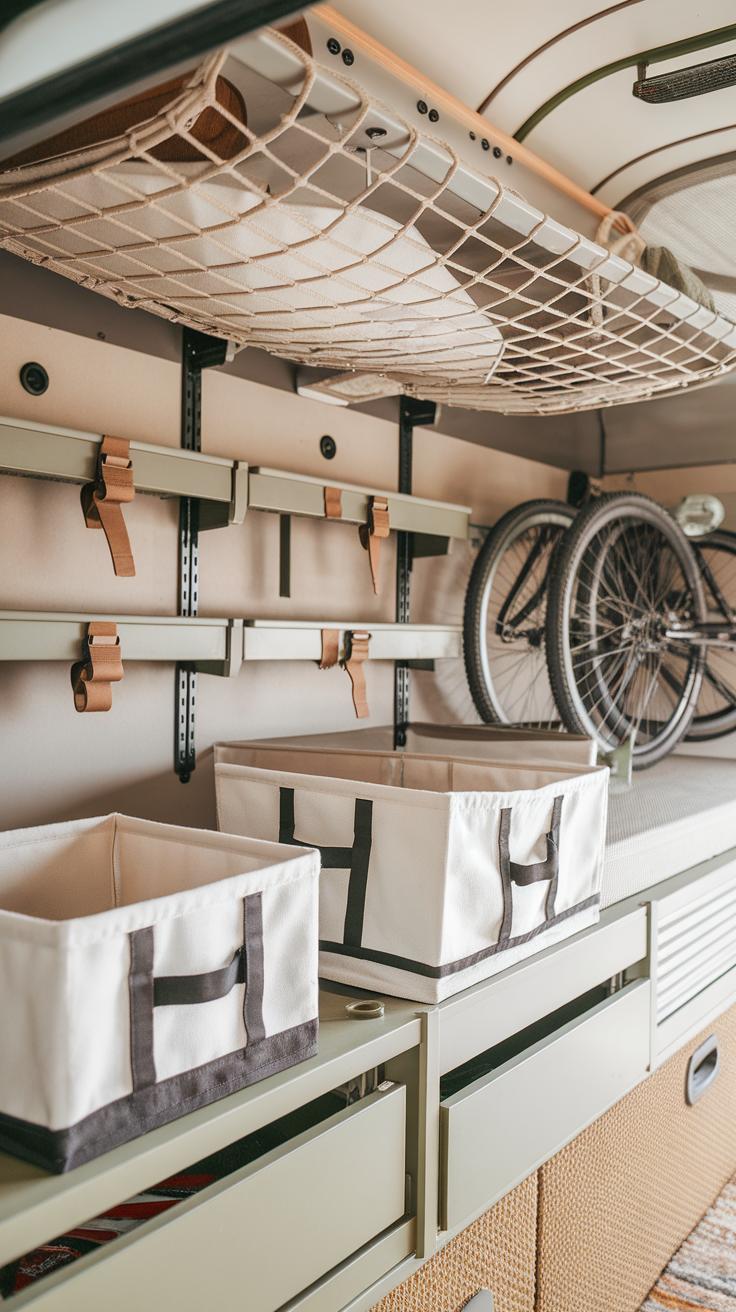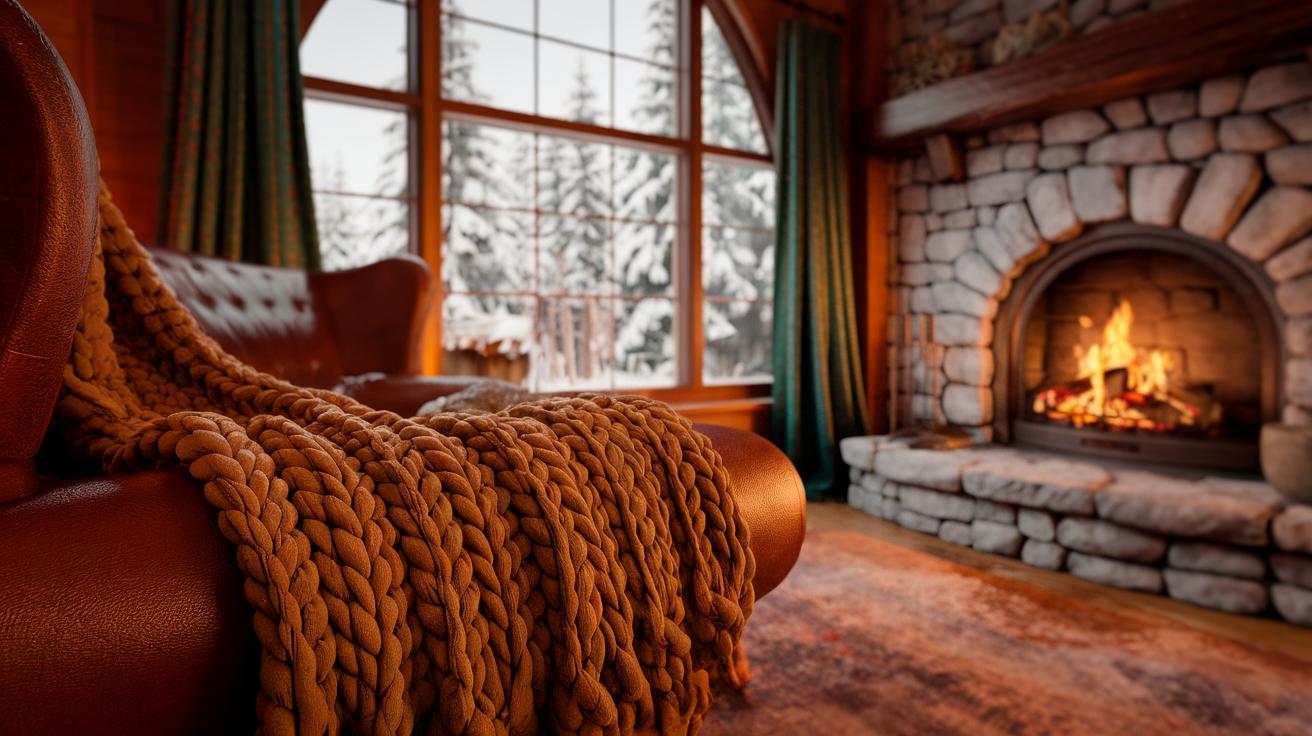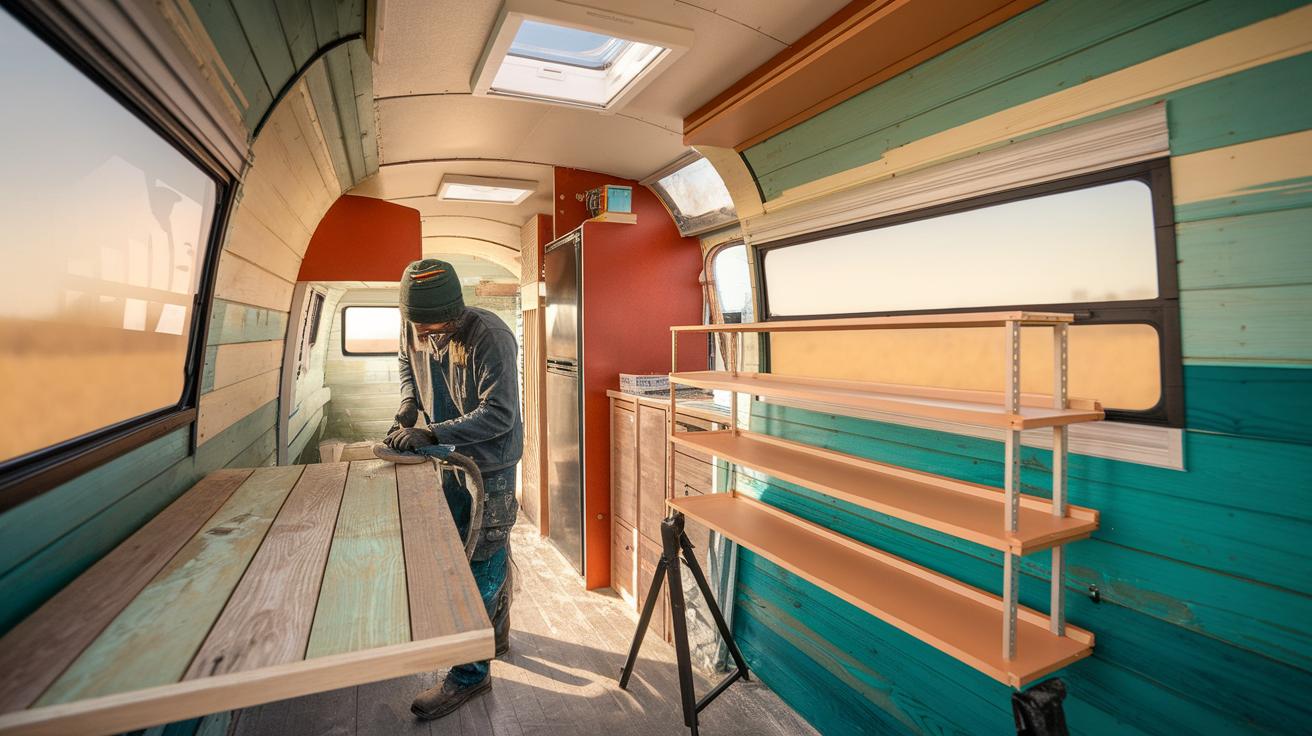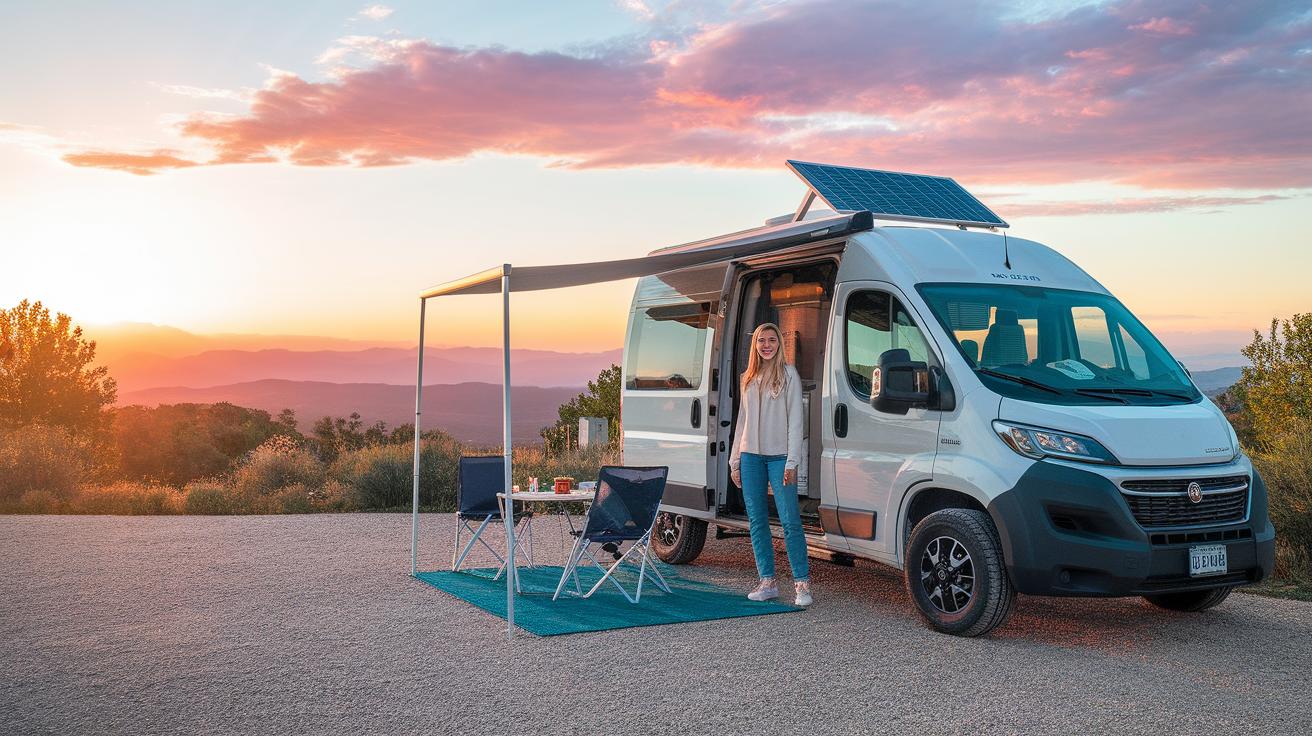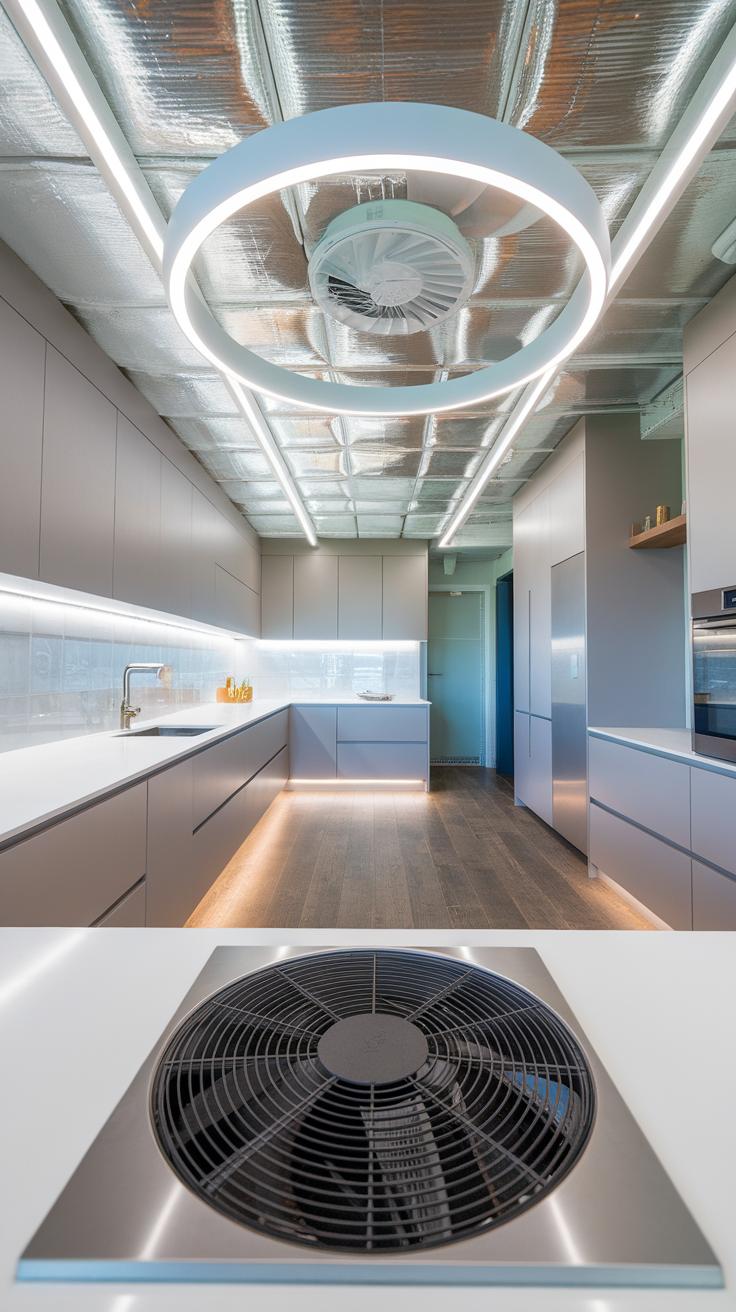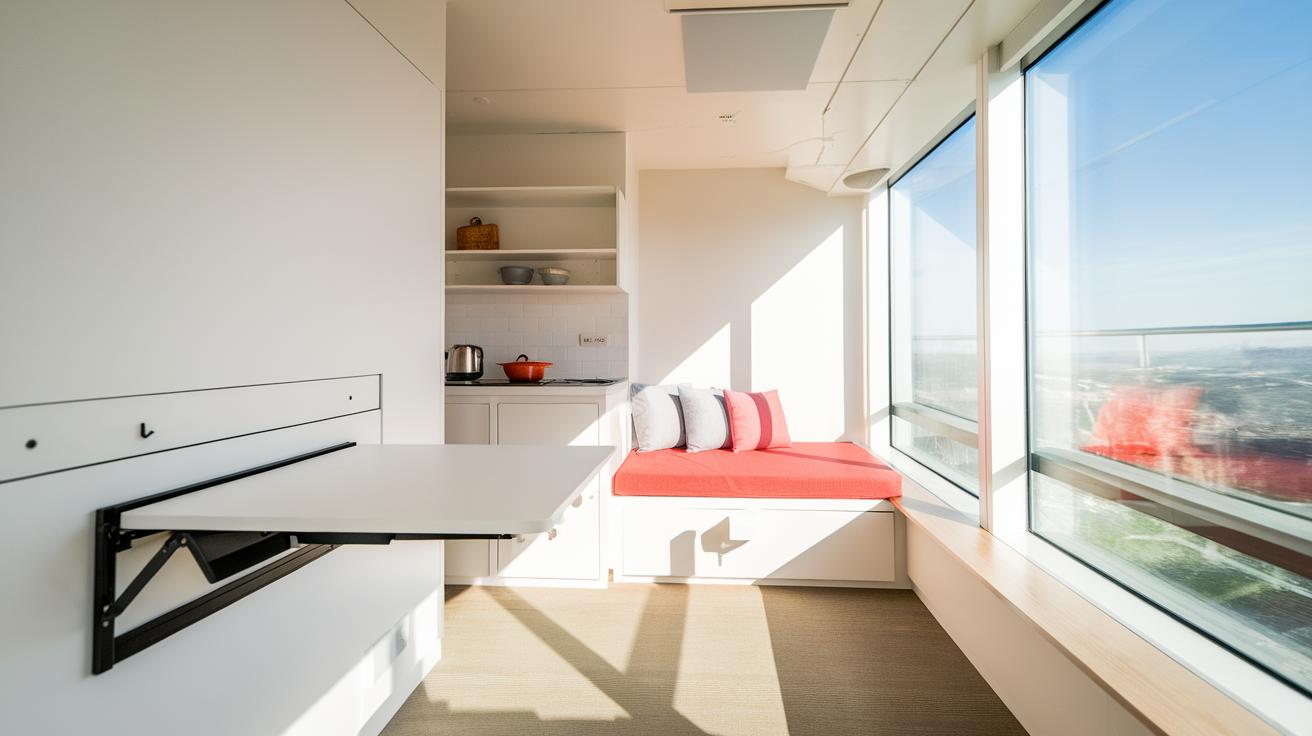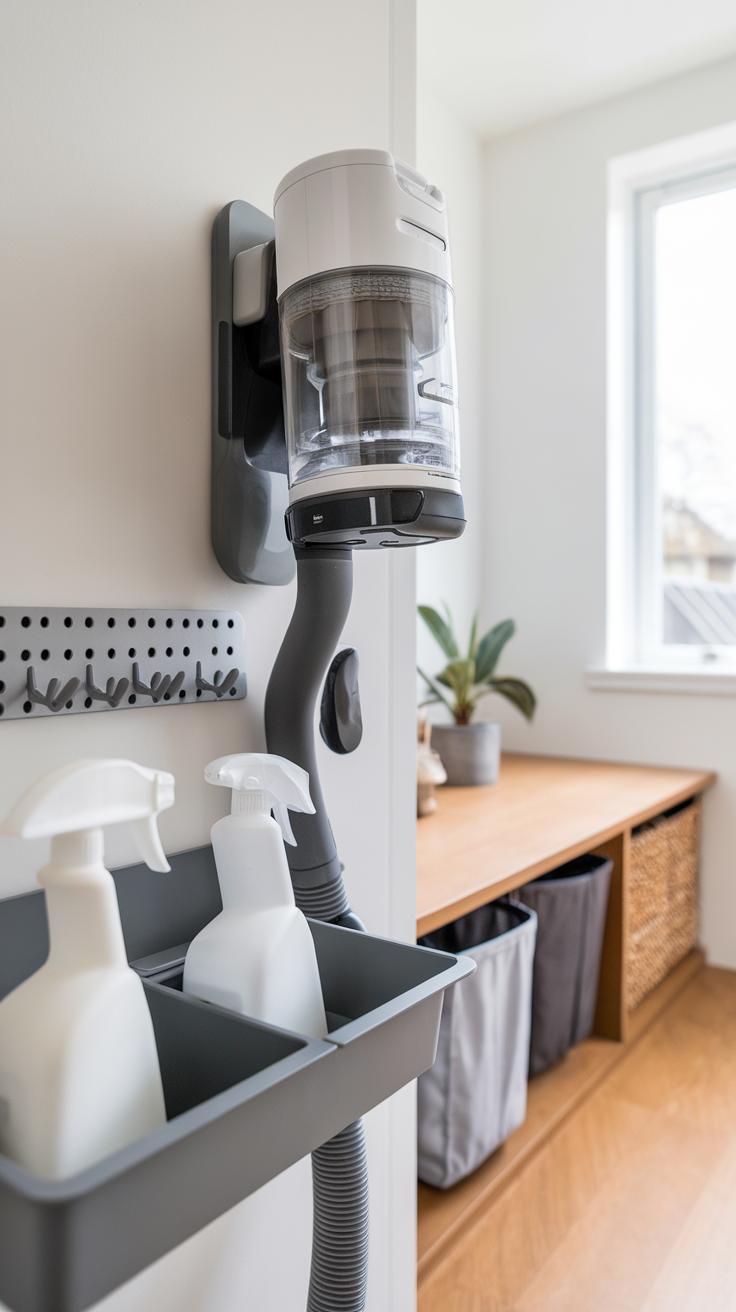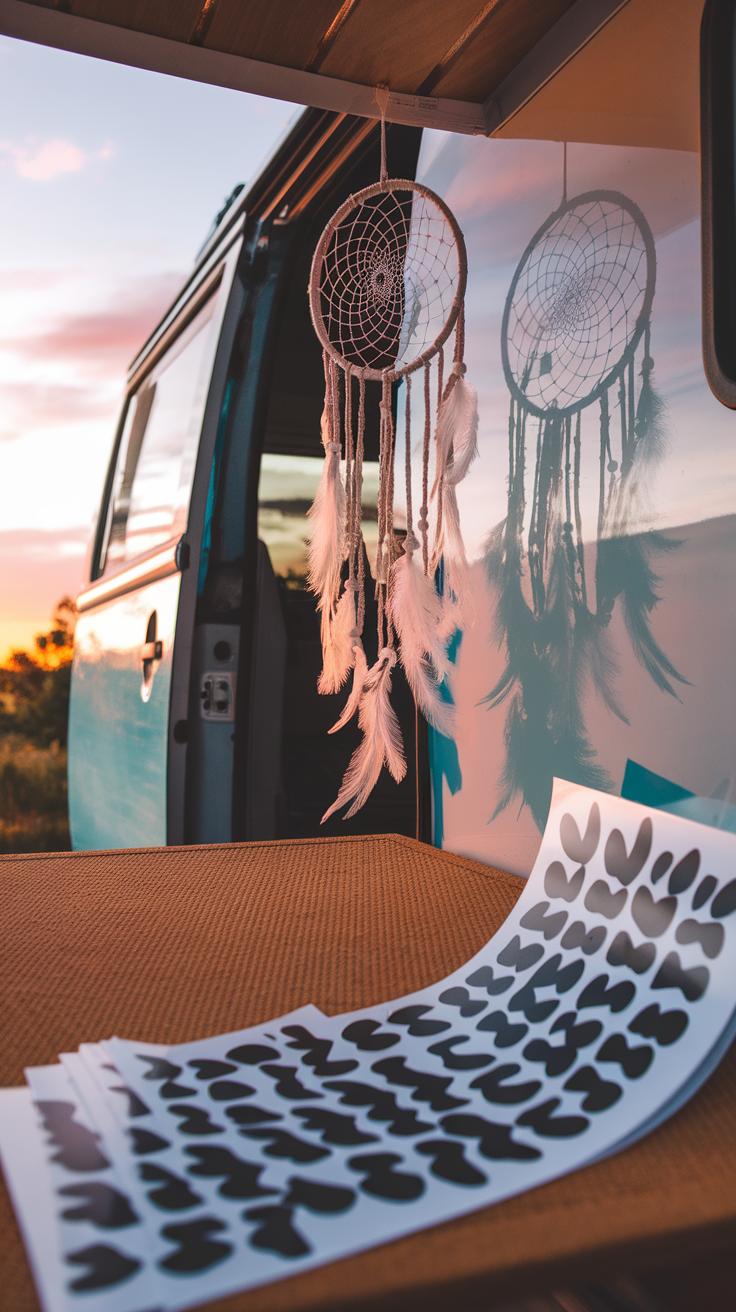Introduction
Living the van life means you carry your home with you. It transforms traveling and daily living into a flexible experience. The key to enjoying this lifestyle is a well-thought-out van interior that balances comfort and practicality. How can you make the best use of limited space? What interior solutions fit both your needs and your van’s dimensions? This question guides this article. By exploring effective van life interior designs and solutions, you can create a space that works for you, whether you are on a weekend getaway or a long journey.
This article presents practical tips and ideas to improve your van’s interior. You’ll learn how to organize storage, choose multi-functional furniture, select materials, and maintain comfort. From layout planning to small optimization techniques, every detail counts when space is limited. Reflect on your lifestyle and preferences while reading to tailor these solutions to your situation. Let’s improve your living space, making your van more than just a vehicle.
Planning Your Van Interior Layout
Planning your van interior layout helps you use every inch of space wisely. Without a plan, you might waste room or create a cramped, uncomfortable setup. Start by measuring the inside walls, floor, and ceiling carefully. Knowing exact dimensions lets you choose furniture and appliances that fit well.
Create a map or blueprint of your van’s interior. Draw the walls to scale, add doors, windows, and any fixed elements like wheel wells. This visual guide makes it easier to test different arrangements before you build or buy anything.
Think about how you will use your van. Do you need a space to sleep, cook, or work? You might want a fixed bed if you mostly rest inside or a convertible sofa-bed to save space. A compact kitchenette in one corner could work for cooking, while a fold-out table can double as a workspace. Plan your layout to fit your lifestyle and keep the space open enough to move comfortably.
Measuring and Mapping Your Space
Begin with tools like a tape measure and notepad. Measure the length, width, and height of your van’s interior carefully. Record measurements of walls, doors, windows, and any curves or wheel wells that reduce space.
Write down these numbers and use graph paper or a computer drawing program to sketch your van’s floor plan. Draw to scale so each square represents a real measurement, like one foot or 12 inches. Mark where fixed things like vents or cabinets sit. This helps you plan furniture size and placement precisely.
Keep your sketch simple but accurate. If you want to rearrange items later, you can overlay new drawings without starting from scratch. Measuring and mapping first saves time and frustration later when fitting furniture and equipment inside your van.
Choosing the Best Layout Style
Several layout styles fit different needs. An open floor plan leaves space free in the center, making it easier to move around. This style suits those who work or spend time standing in their van.
Fixed bed layouts keep a permanent bed in one spot. This arrangement is good if most of your time is resting or sleeping. You sacrifice some open space but gain comfort and stability.
Convertible furniture setups use pieces that serve multiple purposes, like fold-out beds or tables. These offer more flexibility if you want to sleep, cook, and work in the same area. Consider ventilation and natural light when choosing a layout. Make sure air flows well and windows or skylights bring in daylight to keep your van comfortable all day.
How will you prioritize comfort and function? What daily activities need space in your design? Answering these questions helps pick the layout that fits your lifestyle on the road.
Optimizing Storage Solutions
Finding space for all your gear in a van requires creative storage solutions. Using vertical space helps you keep the floor clear and open for movement. Wall-mounted shelves can hold items like books, jars, or daily essentials. Hanging nets offer easy access to lightweight items such as fruits or clothes. Ceiling racks provide extra storage for bulky gear like sleeping bags or outdoor equipment without cluttering your living area.
Under-bed compartments give you a hidden place for larger items like shoes or tools. These spots keep your van looking tidy and offer quick access when needed. Multi-purpose containers work well for grouping similar items while saving room. For example, stackable bins for kitchenware or foldable boxes for clothing keep things organized and easy to find.
Think about what you use most often and place those items in reachable spots. Less-used gear can stay in hidden areas. How much space could you save by rethinking where you store your essentials? Small adjustments in your storage setup can make your van feel bigger and your daily routine smoother.
Vertical and Hidden Storage Options
Wall-mounted shelves free up floor space and keep essentials visible. You can install low-profile brackets that support lightweight containers. Hanging nets work well near sleeping or cooking areas to hold frequently grabbed items. Ceiling racks are perfect for bulky items you don’t need every day, like camping gear or extra blankets.
Hidden compartments increase storage without changing the look of your van. You might build drawers under seats or panels in unused corners. These concealed spaces help keep valuables or less-used tools out of sight. By using these discreet areas, you maintain a minimalist interior while carrying everything necessary.
Could hidden storage solve your clutter problem? Adding just a few well-placed shelves or compartments can drastically improve how much you can carry without feeling cramped. Ask yourself where empty wall or ceiling space exists and how to turn it into functional storage.
Organizing Essentials for Accessibility
Organize your kitchen items by grouping like objects together in clear containers or labeled bins. Store daily-use utensils close to your cooking area for quick reach, while bulk supplies go into harder-to-access spots. Keep clothes sorted by season or usage, storing off-season items under beds or in side compartments.
Tools and repair kits deserve one dedicated box or drawer. This way, you avoid hunting through random spaces when you need to fix something. Personal items such as toiletries and electronics should have a consistent place, like a hanging organizer or a drawer near your sleeping area.
When arranging your possessions, ask which items you need fastest. Place those where you can grab them without stopping your tasks. Less urgent items can be stored out of the way but still easily found. Can you design your setup to reduce searching time and add comfort to your daily life on the road?
Selecting Multi Functional Furniture
Choosing furniture that serves more than one purpose helps you make the most of your van’s limited space. Pieces like foldable tables allow you to create a dining or work area when you need it, then tuck it away to free up room. Convertible beds save valuable square footage by switching from seating to sleeping surfaces effortlessly.
Chairs with built-in storage combine two necessities into one item, cutting the need for extra storage bins or shelves. These dual-function pieces help keep your van organized while making every inch count.
When you carefully select furniture designed to perform multiple tasks, you limit clutter and keep your living area open and flexible. Have you thought about which furniture in your van can handle more than a single role to improve both comfort and usefulness?
Convertible Beds and Seating
Convertible beds come in many styles. Fold-out sofas allow your seating area to turn into a mattress in seconds. Pop-up beds lift from below or fold away when not in use, saving floor space. Murphy beds attach to the wall and fold down only at bedtime.
Some seating not only transforms into beds but also hides storage underneath. Benches or chairs with lift-up seats can store bedding or gear, making every item easy to reach and reducing clutter.
Think about how your seating can change during the day. A spot for relaxing can turn into a comfortable bed at night, creating a smooth flow between different daily activities without overcrowding your van.
Foldable and Collapsible Furniture Options
Tables and chairs that fold or collapse offer easy storage and portability. Lightweight materials like aluminum and strong plastics make these options durable without weighing you down. Folding camping chairs, collapsible tables, and drop-leaf designs bring flexibility and keep the van’s interior open when you don’t need extra surfaces.
Collapsing furniture lets you adapt your space quickly, whether you’re cooking, eating, working, or relaxing. Since they take up little space when stored, you can bring outdoor gear or additional items along without sacrificing comfort inside.
Have you considered how foldable furniture could free up room in your van, making everyday tasks easier and your living area more spacious?
Choosing Materials for Durability and Comfort
Your choice of materials shapes how your van feels and holds up over time. Wood offers warmth and strength but varies greatly. Plywood is common because it balances weight and sturdiness. Avoid heavy hardwoods to keep your van light. Plastics resist moisture and are easy to clean, making them ideal for surfaces like countertops or wall panels. Metals like aluminum add structure without extra weight and stand up well to wear.
Comfort matters for textiles, but durability cannot be ignored. Fabrics need to withstand frequent use and still be simple to maintain. Look for synthetic blends that repel stains and dry fast. Thick cushions with foam cores offer firm support without adding bulk. Choose textiles that stay breathable but prevent dirt buildup, keeping your living space inviting on the road.
Lightweight and Durable Materials
Every extra pound impacts your van’s fuel use and handling. Lightweight materials improve efficiency and driving safety. Plywood works well for cabinets and flooring since it holds weight yet stays light. Aluminum framing is strong and corrosion-resistant, perfect for bed frames or shelving. Composite boards combine materials for extra durability while minimizing mass. How can you reduce weight without sacrificing stability? Consider where heavy items add value and where lighter options meet your needs.
Comfortable Yet Practical Textiles
Your cushions, curtains, and upholstery create a cozy environment, but they must endure the road’s roughness. Select fabrics made from polyester or nylon blends for ease of cleaning and resistance to fading. Foam cushions with medium density balance softness and longevity. Curtains should block sunlight but also be removable for washing. Can your textiles handle accidental spills and daily wear? Opt for covers that zip off or fabrics rated for outdoor use to keep your van fresh through every trip.
Ensuring Proper Ventilation and Lighting
Keeping your van’s air fresh and well-lit plays a big role in comfort on the road. Proper ventilation reduces moisture and odors. It also prevents condensation, which protects your van’s structure and belongings. Good natural light brightens the space, making it feel larger and less cramped. Strategic window placement can maximize sunlight without overheating your van. Roof vents bring in fresh air and let hot air escape. When night falls, artificial lighting steps in to keep your van inviting and functional. Choosing the right combination of vents, windows, and lights helps you create a comfortable living area no matter where you park.
Ventilation Techniques for Fresh Air
Roof vents are a simple way to move air continuously. They release hot air while pulling in cooler outside air. Many come with built-in fans powered by your solar setup, which run quietly and use little energy. Placing windows on opposite sides creates cross-ventilation, allowing air to flow naturally through your van. You can open windows slightly while parked safely to avoid stuffiness. Moisture builds up quickly in small spaces, especially when cooking or sleeping. Active ventilation systems and smart window placement reduce dampness and stop mold from forming. How would better airflow change your daily van life comfort?
Lighting Solutions for Energy Efficiency
LED lights are the go-to choice for van interiors. They use very little power and last a long time. You can install dimmable LED strips or fixtures to adjust brightness depending on your activity, saving energy and setting the mood. Think about installing lights near work areas, beds, and storage to avoid wasting light and power. Maximizing natural light during the day also reduces your dependence on batteries. Using light-colored walls and reflective surfaces spreads daylight inside your van. What lighting setup would make your space both useful and energy-smart?
Incorporating Kitchen and Cooking Areas
Creating a kitchen in your van requires smart use of limited space. You need to balance cooking needs with keeping the area uncluttered and practical. Compact appliances offer a great solution for this challenge.
Portable stoves that fold or slide away work well for small areas. Mini fridges keep perishables fresh without taking up much room. Collapsible sinks save space and make cleaning dishes easier.
Thoughtful storage is key. Use drawers and shelves that fit your tools and food without crowding the space. A secure water supply system, like a built-in tank with a small pump, ensures you have water on demand for cooking and cleaning.
Ask yourself: How often will you cook inside? What meals do you want to prepare? Planning around your cooking habits helps you design a kitchen that fits your lifestyle on the road.
Compact Appliances and Fixtures
Choosing the right appliances defines your kitchen’s functionality. Portable stoves, like single or double burners fueled by propane or electric options, suit different cooking styles. Small electric or compressor mini fridges maintain steady temperatures while conserving energy.
Collapsible or fold-down sinks free up counter space when not in use. Some models even come with built-in drainage systems that connect to gray water tanks. Selecting appliances with multiple uses, such as induction cooktops that double as hot plates, makes your kitchen more efficient.
Organizing Food and Cooking Tools
Efficient storage keeps your kitchen tidy and your cooking stress-free. Use airtight containers to protect food and maximize shelf space. Magnetic strips on walls hold knives safely and free up drawers.
Stacking pots and pans or nesting bowls saves room. Consider pull-out drawers or baskets for easy access and visibility of utensils. Organize your spices in labeled jars within a dedicated rack to avoid chaos.
Think about your most used items. Can you keep frequently used tools within reach? How might organizing your kitchen reduce time spent searching for things while cooking?
Creating a Comfortable Sleeping Area
Your sleeping area impacts how rested you feel each day on the road. It starts with choosing the right bed size to fit your van space and your body comfortably. A bed that’s too small can leave you cramped, while one too large might limit other essential areas. Measure your available space carefully before deciding.
Mattress choice plays a key role in support and comfort. Many van lifers choose foam mattresses for their lightweight and durability. Inflatable mattresses offer compact storage but might lack long-term support. Custom-cut mattresses let you use every inch of space without waste. Consider your sleeping style and how firm or soft you want the surface.
Noise control often gets overlooked but matters for deep sleep. Vans can amplify outside sounds that disrupt rest. Think about how you’ll reduce noise through soundproof materials or simpler methods like thicker window covers. Creating a calm environment helps you recharge for the next day’s adventures. What steps will you take to keep your space quiet and restful?
Choosing the Right Mattress
Foam mattresses, like memory foam or high-density foam, fit most van beds and provide steady support. They keep their shape and are easy to cut into custom sizes. Foam usually offers better insulation, which keeps you warm on chilly nights.
Inflatable mattresses pack down small and adjust firmness with air level. They suit those with limited storage but can be less stable during the night. A puncture risk exists, so having a repair kit is smart.
Custom-cut mattresses can blend foam layers or use specialty materials to match your space perfectly. This option uses every bit of the van layout, avoiding wasted area beneath or around the bed. Which mattress type will best support your sleeping habits on the road?
Privacy and Noise Reduction Tips
Privacy starts with good window coverings. Thick curtains or blackout shades block light and reduce noise. You can buy specific van or RV covers or make DIY options with sound-absorbing fabric.
Adding layers to your walls with soundproof foam or mass loaded vinyl cuts road noise significantly. Cover corners and thin panels where sound leaks. Rugs or blankets nearby also help absorb sounds inside.
Reflect on areas where light or noise sneak in. Then, target those spots with covers or seals. This effort creates a snug, private sleeping nook. How will you tailor your van’s interior to block out distractions and keep your rest uninterrupted?
Maintaining Cleanliness and Organization
Traveling in a van means adjusting to small shared spaces every day. Keeping your van clean and organized takes effort but pays off with a comfortable living area. You can create simple routines to manage dirt and clutter before they pile up. Think about where messes usually form—kitchen counters, floor, and sleeping spots—and plan quick cleanups around those.
Store your cleaning supplies in easy-to-reach containers like small bins or hanging pouches. This way, your cleaning tools stay handy without taking up much space. Regularly wipe down surfaces and sweep the floor to maintain freshness. Are you making time to tidy every day or set aside an hour once a week? Finding a rhythm that fits your travel schedule works best for lasting results.
Cleaning Tools and Routines
Choose compact tools to fit tight van spaces. Small microfiber cloths, travel-sized sprays for surfaces, disposable wipes, and a handheld broom or compact vacuum make cleaning manageable. These items fit neatly into a single drawer or storage box.
Set quick daily tasks like wiping the countertop after cooking and shaking out rugs. Schedule deeper cleaning weekly, such as vacuuming the floor and organizing your storage. Keeping cleaning simple helps you stay consistent, even when you’re tired from traveling. What small daily habit could transform your van’s neatness?
Preventing Clutter Buildup
Regularly review what you carry to avoid clutter. Ask yourself if each item is necessary and serves a clear purpose. Avoid storing things “just in case.” Limit your belongings to essentials that support your routine and lifestyle on the road.
Use storage bins labeled by category to keep similar things together. Clear containers help you find items fast and remind you what you really use. Set up a habit to declutter each week, donating or discarding excess gear. Do you notice anything you haven’t used in weeks taking up space? Removing it frees up room and peace of mind.
Personalizing Your Van Interior
Your van should feel like home without losing its practical edge. Personal touches make your space inviting, but keeping functionality intact is key. Consider decoration items that you can move or use in multiple ways. For example, lightweight fabric wall hangings add color and warmth. These can be rolled up and stored when not needed. Using magnetic frames or clips lets you display photos or notes without nails or glue.
Display important items like maps, schedules, or small keepsakes in visible but tidy ways. A corkboard with removable pins or a small shelf with rails can keep these items organized. Think about what you need every day and how you want to see it. Can your decorations double as storage? This approach keeps your van looking personal without crowding the space.
Removable Decor and Accessories
Choose wall art that weighs little and won’t damage surfaces. Removable adhesive hooks hold keys or small bags without drilling holes. Fabric elements like curtains or cushions can brighten your van and change its feel easily. A patterned throw or seat cover updates your space without permanent changes.
Switch out pieces seasonally or to match your mood. Use lightweight materials so you can rearrange items often. This helps keep your van fresh and adaptable on the move. How can you add color and style while keeping parts easy to take off when needed?
Functional Personal Items
Bookshelves with tight compartments or vertical stacking keep your favorite reads neat and accessible. Small potted plants thrive on windowsills or hanging planters, adding life without clutter. Use multipurpose gadgets, like a speaker that also charges your phone.
Look for storage solutions that show off your items but still keep them secure on the road. Can a plant holder also serve as a small basket? Could your charging station double as a small light source? Personal items should reflect your style and serve a purpose. How can each item in your van offer both comfort and function?
Conclusions
A practical and comfortable van interior greatly enhances your van life experience. Thoughtful use of space, functional furniture, and clever storage options can turn a small vehicle into a pleasant home on wheels. When selecting interior elements, focusing on your personal lifestyle ensures your van meets your daily needs without excess clutter. Regularly reassessing your setup helps you adapt as your travel style evolves.
You have the power to create a van interior that serves you well during every trip. Start with core necessities and gradually add features that increase both comfort and function. Each improvement makes your mobile home easier to live in and more inviting. Practical van life interior solutions put your comfort first and allow you to enjoy the freedom of life on the road.


